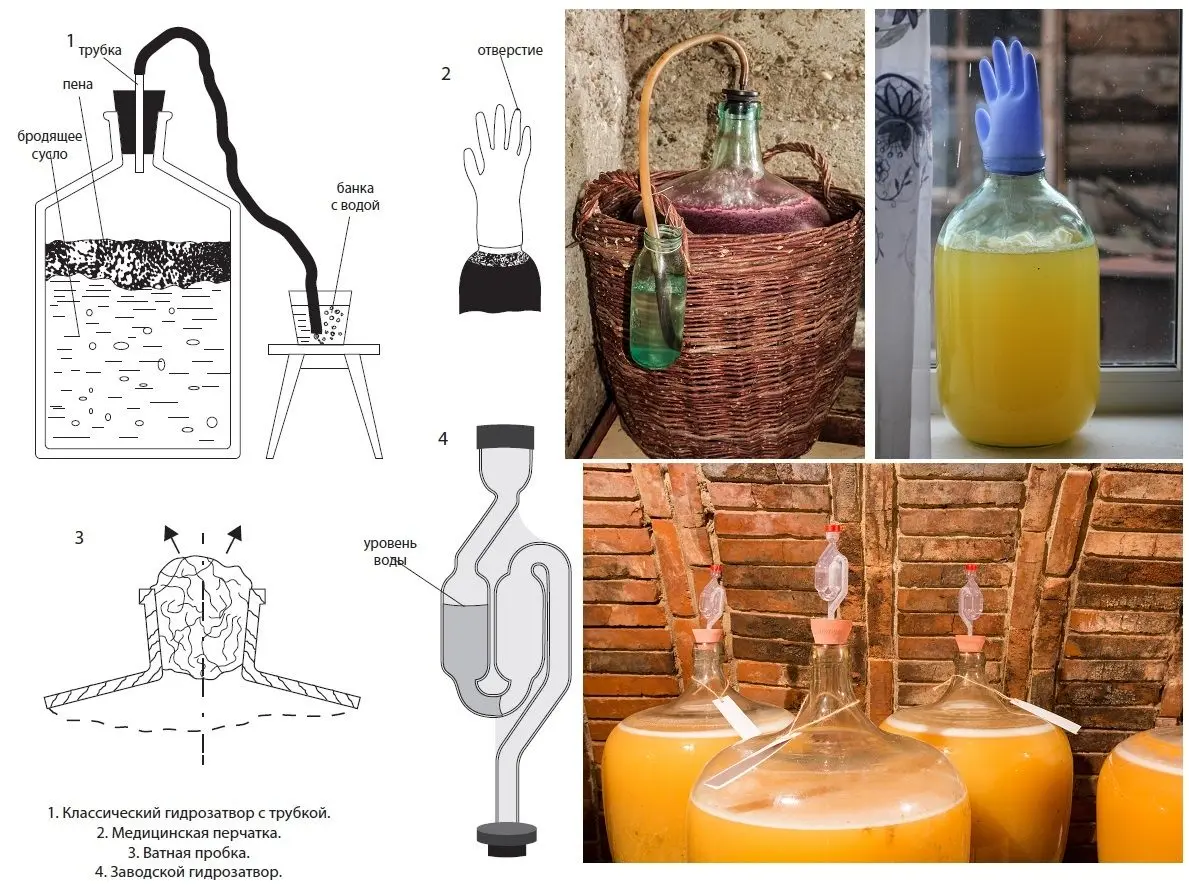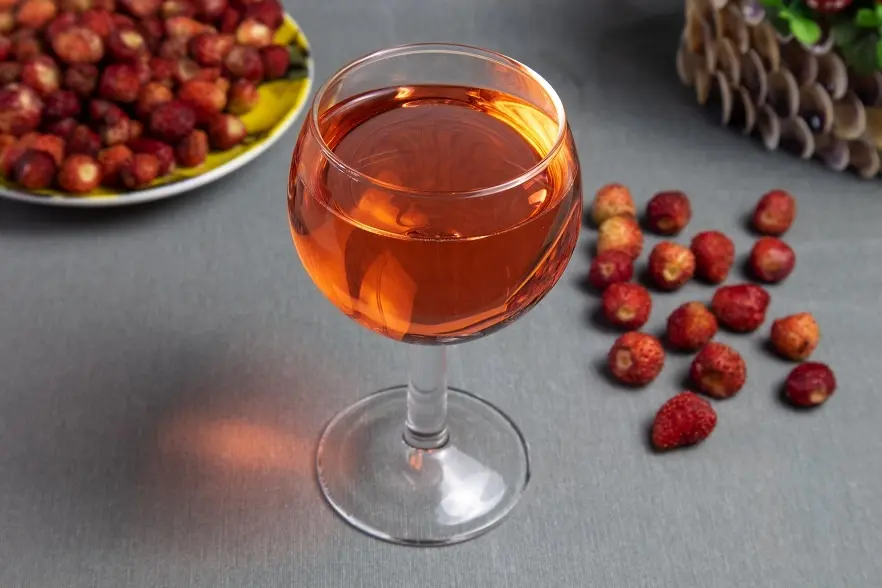For amateur winemakers of the northern regions of Russia, strawberries are an indispensable berry, from which sweet aromatic wines of a beautiful light red hue are obtained. Having studied the experience of cooking, and having tested the technology in practice, I am ready to tell you how to make wine from strawberries at home according to a simple recipe.
Any garden and wild (forest) varieties will do. Wine made from wild strawberries is very fragrant, but not as sweet and strong as from cultivated berries. Sugar must be added, since strawberries initially do not have a high enough sweetness.
At first, the collected strawberries are carefully sorted out, getting rid of spoiled, rotten and moldy berries. Then the peeled berries are washed in warm water. If this is not done, an earthy flavor may appear in the finished wine. I also advise you not to forget about the sterility of all tools and containers used, they must be treated with boiling water and wiped dry with a clean cloth, otherwise pathogenic microorganisms will irrevocably spoil the drink.
Ingredients:
- strawberries – 4 kg;
- water – 3 liters;
- sugar – 2,5 kg;
- unwashed raisins – 100 grams.
strawberry wine recipe
1. Crush ripe washed strawberries with a wooden rolling pin or with your hands. You should get a liquid homogeneous mass.
2. Mix 1 kg of sugar and 2 liters of water in a saucepan. Boil, boil for 3-5 minutes over low heat, removing foam from the surface. The syrup is ready when no more foam appears.
3. Cool syrup to 25-30°C.
4. In a plastic or enamel container with a wide neck, mix the strawberry pulp, sugar syrup and clean cold water (1 liter). Add unwashed raisins, which act as natural wine yeast.
5. Bandage the neck with gauze to protect against flies. Place the bottle in a dark, warm (18-28°C) place for 3-5 days. Stir the wort every 8-10 hours with a wooden stick or hand, drowning the floating pulp in the juice.
6. Fermented wort (signs: foam, hissing, slight sour smell) drain through a straw. Squeeze the pulp through cheesecloth.
7. Mix in the fermentation tank the juice drained from the sediment and squeezed from the pulp. Add 500 grams of sugar, mix. The container can be filled up to a maximum of 75% of the volume to leave room for foam. Install a water seal or medical glove with a small hole in the finger (pierce with a needle) to remove carbon dioxide.

8. Place the container for fermentation in a dark place with a temperature of 18-28°C.
After 5 days, remove the water seal, drain separately 250 ml of the wort, dilute 500 grams of sugar in it, pour the resulting syrup back into the container and close it again with a water seal. After another 5 days, add the remaining sugar (500 grams) according to the described technology.
If the wine continues to ferment 55 days after the start of preparation, in order to avoid bitterness, it must be drained from the sediment through a straw and allowed to ferment.
9. After the end of fermentation (the must brightens, sediment appears at the bottom, the water seal does not blow bubbles or the glove deflates), which lasts 30-60 days, drain the young wine from the strawberries through a thin tube, trying not to get the sediment.
10. Taste the wine. Add sugar if desired. Since the fermentation has ended, the sugar added at this stage will not be processed into alcohol, but will only increase the sweetness. Separately, you can increase the strength by adding alcohol or vodka in an amount of 2-15% of the volume. Fortified strawberry wine is better stored, but somewhat tougher in taste.
11. Pour the young wine into aging containers. It is advisable to fill the vessels to the top so that there is no air gap left. Close hermetically. If sweetening was done at the previous stage, keep the first 7-10 days under a water seal.
12. Move the bottles for 50-90 days to the cellar or refrigerator for aging, which will improve the taste. It is important to maintain a stable temperature of 5-12°C.
When sediment appears in a layer of 2-6 cm (at first once every 15-25 days, then less often), filter the wine by pouring it through a straw into another container. The wine is ready when no sediment appears. After that, the drink can be bottled for storage and tightly closed with corks.
The strength of the finished homemade strawberry wine is 11-13 degrees. Shelf life in a dark cool place – 30-36 months.










